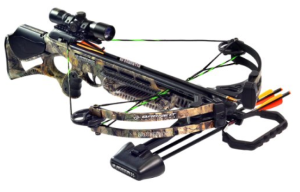 If you are in the market for a brand new crossbow, the Barnett Brotherhood Crossbow package will provide you with a lightweight bow perfect for delivering that ethical kill when hunting all types of legal game. The unit comes complete with a 4×32 multi-reticule scope, magnesium STR Riser, and a CNC machined 7/8 inch Picatinny Rail. The ultra light composite stock hosts a HD camouflage finished exterior. The package comes with three 20-inch arrows. The crossbow also comes complete with a quiver with a three-arrow capacity.
If you are in the market for a brand new crossbow, the Barnett Brotherhood Crossbow package will provide you with a lightweight bow perfect for delivering that ethical kill when hunting all types of legal game. The unit comes complete with a 4×32 multi-reticule scope, magnesium STR Riser, and a CNC machined 7/8 inch Picatinny Rail. The ultra light composite stock hosts a HD camouflage finished exterior. The package comes with three 20-inch arrows. The crossbow also comes complete with a quiver with a three-arrow capacity.
The Barnett Brotherhood hosts an anti-dry fire trigger which helps to prevent you from an accidental firing of the bow without an arrow. The bow is fitted with anti-vibration isolation technology to help in minimizing the amount of noise the bow produces. The kinetic energy of the bow is 109 ft-lbs, and the draw weight is 160 pounds. The bow has a speed of 350 feet per second, and a 13.5-inch power stroke. With this kind of power, you can expect full penetration of a target at 50 yards, and 75 percent penetration of a target at 100 yards.
Axle to axle the bow measures 19 inches. The Barnett Brotherhood weighs 7 pounds. It is 21 inches wide and 35.75 inches in length. This model has proven quite popular since its release in 2014. The bow is one of Barnett’s premier models featuring adequate power and a light, well-balanced design. What’s great about the Brotherhood crossbow is that it offers the power of a much higher end crossbow, at a far more affordable price.
Barnett has constructed the Brotherhood with a durable bowstring. The Crosswire® bowstring is reliable, strong, and made with patented fibers. A significant amount of power is easily generated through the bow’s frame while ensuring slip remains minimal.
Ease of Assembly
The crossbow comes with the tools and hardware required for complete assembly, and putting everything together proves rather easy. The Barnett Brotherhood is sold with an owner’s guide giving you concise instructions on how to put everything together. The bow’s riser must be attached to the included stock. The two pieces are then connected to the foot stirrup. The scope and quiver will have to be mounted: Once this is done, the bow will be ready for use.
Speed and Kinetic Energy
When you use the Brotherhood crossbow, you will be shooting an arrow traveling at 350 feet per second (fps) and the kinetic energy behind the arrow will be 109 ft-lbs: This means you’ve got so much power the arrow could run through thorough an engine block. You are assured fast and full penetration of prey at 50 yards.
Noise Level
One of the disadvantages associated with the Barnett Brotherhood crossbow package is that this particular crossbow proves a bit noisier than other models. This is, unfortunately, the case even in light of the fact that the bow is fitted with anti-vibration isolation technology. Thus, it is not necessarily the best choice for the neophyte hunter or for a person who needs to work on shot accuracy. While it is a powerful choice for hunting, it’s not a terrific crossbow for repeat firing as the extra noise may alert prey of the hunter’s presence. You’ll need to be ready to install vibration dampeners and string silencers.
Crossbow Accuracy
The Barnett Brotherhood is a remarkably accurate compound bow. The inclusion of a reticle scope increases the accuracy this bow delivers. The only feature the scope lacks is illumination; nevertheless, it is suitable for hunting in the pre-dawn hours. It will supply you with a crisp, clean, clear image of your target with plenty of contrast in a variety of lighting situations.
Safety
The Barnett Brotherhood is a bow with a solid design. The magnesium STR riser ensures a durable bow body, as does the light composite stock. The machined rail is perfectly straight. The bow’s anti-dry fire features increase the safety level of this model. The trigger is ideal for this type of bow, as it can withstand more pressure and remains solid to the user’s touch. The trigger pull is equal to 3.5 pounds. Finally, the bow is crafted with a finger guide: This feature keeps your fingers out of the bow’s firing mechanism.
Product Warranty
Every crossbow that Barnett creates has a five-year limited warranty that comes with the model. The warranty includes coverage of the limb assembly, bow trigger mechanism, and the stock. Arrows, cables, and strings are not covered, but the warranty covers bow parts, the labor for repair, and the cost of transport or shipping to the customer. Dry firing damage, bow modifications, or lack of normal maintenance will void the warranty.
Conclusion
The Brotherhood crossbow is an exceptional model for hunting or target practice. The affordability of the model, along with the power, speed, and durable design make it worthwhile investment. If you plan on buying the Barnett Brotherhood, consider an investment in some dampeners and silencers so you can make the bow as quiet as possible when you use it for hunting. All in all, the Barnett Brotherhood ranks among the best crossbows on the market today.

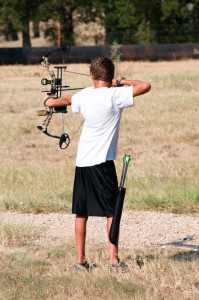 As an archer, you will need something to transport your darts, bolts, and/or arrows: This piece of equipment is called a quiver. Of course, there are many unique designs and styles when it comes to quivers, so understanding the types of quivers and features associated with each will help you in making a buying decision. The types of quivers available are usually identified by the way they attach (or do not attach) to the archer’s body. Each type of quiver has unique features, advantages, and disadvantages: Examining all of the latter in detail will allow you to discover the best quiver for you and your needs.
As an archer, you will need something to transport your darts, bolts, and/or arrows: This piece of equipment is called a quiver. Of course, there are many unique designs and styles when it comes to quivers, so understanding the types of quivers and features associated with each will help you in making a buying decision. The types of quivers available are usually identified by the way they attach (or do not attach) to the archer’s body. Each type of quiver has unique features, advantages, and disadvantages: Examining all of the latter in detail will allow you to discover the best quiver for you and your needs.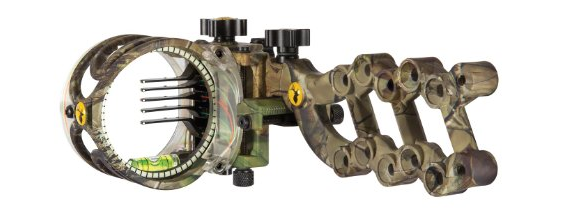
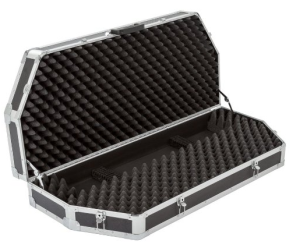 The factors you need to consider when you are making an investment into a bow case for your archery equipment include the value, fit, and the degree of protection the case provides. You should also consider the amount of interior space and/or special compartments and any extras that come with the case you are considering. Finally, you have to make the chief decision as to whether you want a hard case or a soft bow case, each of which can serve you well in certain situations, but may not be ideal for every condition. In the end, you might very well decide to invest in both a soft and a hard case so you have the proper case for every situation or condition you encounter.
The factors you need to consider when you are making an investment into a bow case for your archery equipment include the value, fit, and the degree of protection the case provides. You should also consider the amount of interior space and/or special compartments and any extras that come with the case you are considering. Finally, you have to make the chief decision as to whether you want a hard case or a soft bow case, each of which can serve you well in certain situations, but may not be ideal for every condition. In the end, you might very well decide to invest in both a soft and a hard case so you have the proper case for every situation or condition you encounter.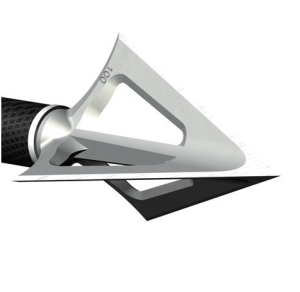 When you are buying arrowheads for your
When you are buying arrowheads for your 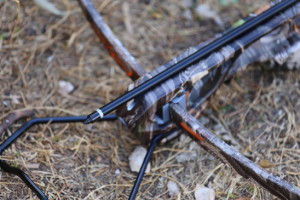 Whether you refer to the shaft of your crossbow projectile as an arrow or a bolt, both references are correct. Remember, however, the word bolt applies to projectiles for use with a crossbow and the term cannot describe projectiles that work with a recurve bow. Before examining what features you should seek in the crossbow bolts you buy, it is necessary to examine the different parts of the bolt: Doing so will help you assess the features of existing bolts on the market with a clear understanding of arrow structure.
Whether you refer to the shaft of your crossbow projectile as an arrow or a bolt, both references are correct. Remember, however, the word bolt applies to projectiles for use with a crossbow and the term cannot describe projectiles that work with a recurve bow. Before examining what features you should seek in the crossbow bolts you buy, it is necessary to examine the different parts of the bolt: Doing so will help you assess the features of existing bolts on the market with a clear understanding of arrow structure.
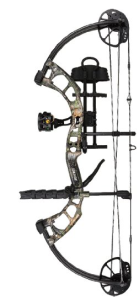 The
The